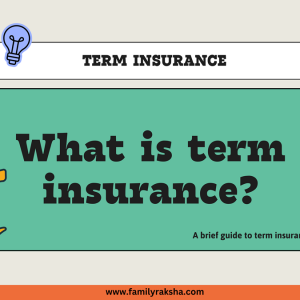Term life insurance is a type of life insurance that provides coverage for a specific period of time, known as the “term.” If the insured person passes away during the term, the insurance company pays out a death benefit to the designated beneficiaries. If the insured person survives the term, the policy typically expires without any payout.
Choosing the perfect duration for your term life insurance involves careful consideration of your financial goals, obligations, and circumstances. Here’s a step-by-step guide to help you make an informed decision:
Assess Your Financial Goals and Needs:
- Determine the purpose of the insurance: Are you seeking to provide financial protection for your family, cover specific debts (like a mortgage or student loans), or ensure your children’s education?
- Consider your current financial obligations: Calculate your outstanding debts, ongoing expenses, and future financial needs. These may include mortgage payments, outstanding loans, education costs, and daily living expenses.
- Evaluate your dependents’ needs: If you have dependents (spouse, children, elderly parents), consider how long they will need financial support in your absence.
Estimate the Time frame:
- Decide how many years you need coverage: Consider how many years it will take to achieve your financial goals, pay off debts, or until your dependents become financially independent.
- Factor in major life events: Anticipate significant life changes such as your children’s graduation, retirement, or paying off major debts.
Select the Term Length:
- Short-term vs. long-term: Term life insurance typically comes in terms of 10, 15, 20, 25, or 30 years. Choose a term that aligns with your financial goals. For example, if you want coverage until your mortgage is paid off, a 20- or 30-year term might be appropriate.
Consider Your Budget:
- Premium affordability: Longer terms usually come with higher premiums. Choose a term length that you can comfortably afford throughout the policy duration.
Evaluate Health and Age:
- Health status: If you’re younger and healthier, you may opt for a longer term to lock in lower premiums. If you’re older or have health concerns, a shorter term might be more suitable.
Future Flexibility:
- Convertibility: Some term policies offer the option to convert to permanent life insurance without a medical exam. This can be valuable if your circumstances change and you want lifelong coverage.
Consult a Financial Advisor or Insurance Agent:
- An experienced professional can help you navigate the complexities of life insurance and provide personalized recommendations based on your unique situation.
Review and Update Regularly:
- Life changes: Reevaluate your insurance needs periodically, especially after major life events like marriage, birth of a child, or a significant change in income.
Shop Around and Compare Quotes:
- Obtain quotes from multiple insurance providers to find the best coverage and premiums for your chosen term length.
Read the Policy Carefully:
Understand the terms, conditions, and any exclusions associated with the term insurance policy before finalizing your decision.
There is no one-size-fits-all answer to choosing the perfect term length for your life insurance. It’s a decision that requires thoughtful consideration of your unique circumstances and financial objectives.





